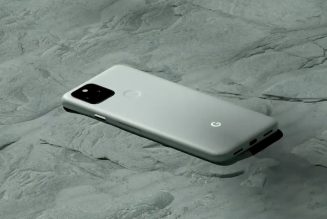You wouldn’t want to fly most drones in a serious downpour, even most industrial-grade ones from DJI. Until today, DJI’s state-of-the-art was the M300 RTK, a drone that took a barrage of water in marketing videos but where the fine print (PDF) says that snow and heavy rain are not OK for flying. But DJI’s weather sealing and confidence rating have improved — the new DJI M30 Enterprise, announced today, is explicitly ready for “heavy rain, high winds, high altitudes, even in icy and snowy conditions from -20° C to 50° C,” according to the company.
:no_upscale()/cdn.vox-cdn.com/uploads/chorus_asset/file/23333171/DJI_M30_IP55.jpg)
The M30 is also more portable than practically any of the company’s other industrial drones — small enough to fit into a large backpack or small rolling case — and with self-locking arms that snap into place and can be folded with the push of a button instead of having to screw and unscrew each one like on previous Matrice models. While the 8.2-pound drone still has the tubular arms common to industrial UAVs, the design’s a lot closer to the Mavic that helped DJI dominate the foldable drone category.
:no_upscale()/cdn.vox-cdn.com/uploads/chorus_asset/file/23333202/DJI_M30_unfolding.jpg)
The maximum 41-minute flight time means the M30 doesn’t have quite the endurance of DJI’s longest-lasting drones, but DJI’s taking advantage of its size in another way — it’s finally revealed its own robotic drone-in-a-box solution for completely autonomous missions, one small enough to work on the back of a pickup truck.

The DJI Dock has its own built-in weather station, surveillance cameras, antennas, 25-minute automatic fast battery charging, and can support drone mission up to 7 kilometers away, though do note the fine print there:
The DJI Dock must be used in accordance with applicable laws and regulations, and its advanced functions cannot yet be used in jurisdictions where a human pilot must stay within the drone’s line of sight or maintain physical control of the drone by holding a controller.
One of those “jurisdictions” is the USA, though the FAA has been taking baby steps towards letting automated drone-in-a-box missions proceed on a case-by-case or company-by-company basis. Most prominently, American Robotics got greenlit for some that have minimal human involvement last January.
The Dock does dedicated power and internet access, though DJI says there’s an internal battery for power failures, and it can support a 4G dongle.
:no_upscale()/cdn.vox-cdn.com/uploads/chorus_asset/file/23333221/DJI_M30T_profile.jpg)
Camera-wise, there are actually two models of the M30: the M30 and the M30T. I’ll let DJI explain:
The M30 model integrates a 48 megapixel 1/2’’ CMOS sensor zoom camera with 5×~16× optical and 200× digital zoom, a 12 megapixel wide-angle camera, 8k photo 4K/30 fps video resolution, and a laser rangefinder which can give the precise coordinates of objects up to 1,200 meters away. The M30T features an additional 640×512 px radiometric thermal camera.
There’s also six-way obstacle avoidance sensors, and the three-propeller emergency landing feature of the M300 RTK makes its way here, too.
As is typical with enterprise drones, DJI didn’t provide us with pricing right away — but for reference, the M300 RTK started at $10,000 and up. Here, both of the new M30 models come with a totally redesigned RC Plus controller with a larger 7-inch screen (up from 5.5-inch) and IP54 protection for use in heavy rain while retaining the swappable external battery. There’s also a new DJI FlightHub 2 flight management software package coming in October for DJI’s enterprise drones and a Zenmuse H20N “starlight-grade hybrid night vision sensor” you’ll be able to add to the older M300 RTK.
:no_upscale()/cdn.vox-cdn.com/uploads/chorus_asset/file/23333225/RC_Plus_remote_controller_IP54.jpg)
If you’re interested in the drone-in-a-box: “DJI Dock is currently being tested with selected users and will be available for purchase starting from Q4 2022,” the press release reads.









